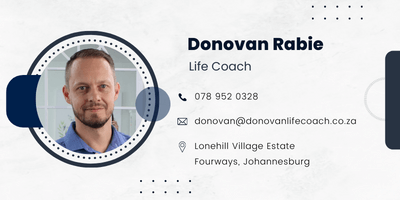
10 world-class mindset shifts that will…
~ Accelerate your success.
~ Bring out your inner genius.
~ Create a lasting impact on your happiness.
Price From: $11.49
“Growth and comfort do not coexist.” – Ginni Rometty. Do you ever think you’re the only one who struggles to embrace change or is surprised by how unsustainable it can be sometimes? Well, you’re not alone. This article will give a brief introduction to change, why the brain does not embrace it, and how the process of change is likely to occur.
There is nothing more inevitable than change. Reality itself is designed to embrace change no matter how chaotic it may appear. Everything from the elements that constitute outer space to our bodies and our outlook on life goes through a process of change. So, then why is it so hard to change? Why is most change unsustainable? And why do we drag our heels when we need to change even when we are faced with stress, anxiety, burnout, and apathy?
Research indicates that only about 50% of patients with at-risk heart and health conditions comply with their doctor’s medical advice to stick to their drug regimens and less than half commit to making long-term lifestyle changes. One would assume that a doctor’s advice would hit home, especially when the person’s life is at stake and yet, most of the time it doesn’t.
Even though they are well-meaning, doctors (and people in general) follow 3 rules that almost always lead to unsustainable change. They are facts, fear, and force. Simply put, these 3 factors form an “advice-giving” approach and dimmish an individual’s ability to harness their intrinsic motivation.
Clearly, as a life coach, I understand that change starts from within… But there’s a problem…
How the Brain Prevents Change
The brain is designed (among other things) to help you solve problems. Unfortunately, though the brain cannot distinguish between good and bad so no matter how dysfunctional your habits or behaviours may be, at one stage, your brain helped you solve a problem. This creates a reliable neural pathway that the brain will utilise every time a similar situation occurs.
At some point, your (now) unhelpful habit or behaviour was once the right solution to a problem you were once grappling with. For example, consider how repetitive and unconsciously driven your daily rituals are. By solving all these problems to get you out of bed and ready for the day, your brain has been able to streamline your morning, make it more efficient, and create reliable unconscious patterns of behaviour that you don’t need to think about.
Like getting you up in the morning, your brain has fabricated a blueprint of endless aspects of your life to help you navigate them with ease. Millions of neural pathways architecturally structure your inner and outer reality so most of your life can be placed on autopilot.
The Psychodynamic Approach
From a psychodynamic perspective, an individual’s childhood experiences develop the first implicit models of their world which go on to help them understand how to function effectively. These internal models evolve and adapt as the person grows up and understands themselves better. These models entrench neural pathways in the brain and thrive on reliable and repeatable patterns of behaviour. These
Your Brain Wants You to Survive, Not Thrive!
Change is new, untested, unpredictable, and unreliable and can thus have the potential to represent danger and uncertainty. A lack of historically reliable coping mechanisms will unfortunately deter many people from creating sustainable change.
For all its beauty and genius capabilities, the brain has a hard time letting go of the past! Research has found that learning a new behaviour will not permanently get rid of an earlier one. Even if the old behaviour does not provide value, it still won’t be erased. As they say, “old habits die hard”.
“Transformation occurs when formative core beliefs, activated along with their deeply ingrained and complex, original experiential patterns, are expanded by new experiences.” – Hakomi Mindfulness-Centered Somatic Psychotherapy: A Comprehensive Guide to Theory and Practice
The Fisher Transition Curve
John Fisher’s model of personal change – The Personal Transition Curve – is an analysis of how individuals deal with change. Have a look at it. How many of those transitional moments have you experienced when trying to create change in your life?

A 3-Step Process to Bring About Change
The Bridges transitions model serves as an excellent resource to help you visualise how we transition through change and what could be expected along the way.

Step 1. Ending. Losing. Letting Go.
Step 1 is characterized by an emotional upheaval and an initial resistance to change or even acknowledgement that change must occur. During step 1 the person has an idea that something is not right and even though their current experience may be unsettling and causing problems, their readiness to embrace change is still low due to the uncertainty and fear that the unknown factors of change represent. Fantasies of a better future become the catalyst that starts to get the person to accept that change must occur. Research and getting advice from others are good signs that change is being seriously contemplated.
Step 2. Neutral Zone
During step 2 the individual has begun the process of change, but they haven’t completely bought into the benefits of change yet. This will often create feelings of resentment as a grip on the old is starting to become undone. They now realise they must take responsibility for their actions and formulate new behaviours and mindsets. Depending on the change, this can often become a major hurdle as the person is now conscious of their incompetence in their new role and/or identity. This stage requires grit, patience, adaptability, and an open mind. This is certainly the messy bit and represents the bottom of Fisher’s transition curve. This is the messy part! This is where we courageously face our demons. This is also the foundation where transformation and growth start to take root.
Step 3. The New Beginning
Step 3 allows us to take a deep breath and reflect on the journey of change. A greater acceptance of what change means to the individual becomes clear. It is also characterized by high energy and an openness to learn. This is a good space to be and one that is worth the reward.
A Cautionary Step 4. Backsliding and Setbacks
The only problem with climbing a mountain is the complacency at the top. This is a space where old habits can sneak back in. Be aware of the devil behind you that tempts you to let your guard down. If you fall off the horse, do your absolute best to get back on. Allow the setback to teach lessons. Find out what your triggers are, and which weak points need to be strengthened. This is a stage where one must reflect on their higher values, purpose, and reasons for creating change.
Conclusion
Change is a journey that everyone is guaranteed to experience. It is a powerful force that deserves respect and an excellent asset that can be embraced. Change is like a wise old teacher coming to teach us some powerful life lessons. I encourage you to read Robert Kegan’s book Immunity to Change.

Interested in what I do?

Donovan – Life Coach – 078 952 0328








